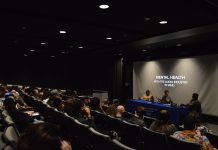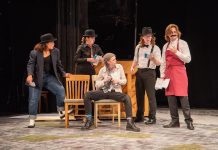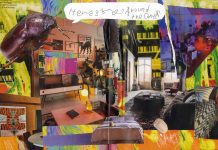Retired Webster University Professor Bob Corbett put an entire addition into his house so he and his life partner, Sally Sharamitaro, could watch birds.
The couple have their meals at a dining table overlooking their backyard, which typically has seven feeders and a bird fountain, and has attracted over 300 birds since Nov. 2006.
“We would draw a tremendous number of birds in different sorts because we had so many feeders,” Corbett said.
Corbett taught in Webster’s philosophy department for 36 years. He taught animal philosophy courses during his tenure, and eventually retired in May 2001.
Corbett has loved animals since he was a little kid. He considered the St. Louis Zoo a playground of sorts. Corbett lived four blocks from the zoo in Dogtown his entire life. He said it was commonplace for parents to send their children to the zoo on their own.
“Today, parents would be arrested for this sort of practice,” Corbett said jokingly.
Many animal keepers also lived around his area. Every once in a while, those keepers would bring an animal home with them.
“Jocko, who was the lion tamer, had a big cage in his backyard and would bring a lion home every now and then,” Corbett said. “We would get to feed him.”
As Corbett got older, he believed animal philosophers like Peter Singer asked important moral questions that needed to be raised. That’s when he got started in philosophy.
Corbett currently runs his own website, which covers a variety of topics, including his studies on Haiti, his travel journal of Ireland, his studies on Dogtown, his personal book reviews, his family history and his philosophical works.
Sharamitaro photographs the birds. She said color is an important aspect in finding birds to photograph.
“You see a cardinal and you want to take a picture of it in the winter with the snow,” Sharamitaro said. “There’s a great red and white contrast.”
Their other bird sightings come from Forest Park, where they’ve been documenting since 2008. They walk throughout the park, but Corbett said most bird sightings happen in Kennedy Forest.
“We had a little dirt lane in the deep woods of Kennedy Forest that Sally and I nicknamed ‘Hummingbird Lane,’” Corbett said. “You would see two to three hundred hummingbirds in these big bushes on any given day. They would swarm all around, and you’d be ducking.”
Sharamitaro prefers to be near water.
“I loved going around the lakes because that’s where we found an awful lot of beautiful water birds,” Sharamitaro said.
Corbett lives in the same house from when he was a child. Forest Park was only four blocks away.
“We would go all four seasons, at least a couple times a week on decent days,” Corbett said. “We know where every kind of bird is—we know which ones are by the skating rink and which ones are by the opera house.”
Corbett and Sharamitaro have also had avid birdwatchers at their house for breakfast, including a son and mother from Australia.
“We tell them to come around 8 a.m. because that’s when you’re going to see the maximum number of birds,” Corbett said. “That’s usually when we would have the feeders filled with different kinds of feed. We would always get beautiful gifts from (visitors).”
Birdwatchers most commonly visited the house to see the Eurasian Tree Sparrow because St. Louis is its only home in North America.
“People would come from all around the world just to see this sparrow,” Sharamitaro said. “You couldn’t find anything like it anywhere else. It’s great to have a bird pretty exclusive to St. Louis.”



